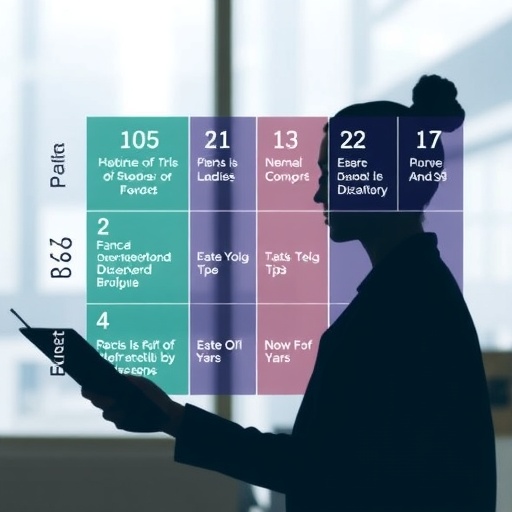In a significant advancement poised to reshape oncological treatment assessment, the European Society for Medical Oncology (ESMO) has unveiled the latest iteration of its pioneering clinical benefit evaluation tool, the ESMO-Magnitude of Clinical Benefit Scale (ESMO-MCBS) version 2.0. Published on May 23, 2025, this revamped scale represents more than an incremental update; it embodies a strategic overhaul designed to elevate the rigor, precision, and relevance of cancer therapy evaluations amid rapidly evolving treatment paradigms.
The ESMO-MCBS has long stood at the forefront of clinical oncology as a standardized framework for quantifying the therapeutic impact of anticancer agents, guiding clinicians, policymakers, and patients alike in navigating complex treatment decisions. Version 2.0 distinguishes itself through extensive methodological refinements and inclusion of critical innovations shaped by comprehensive stakeholder consultation, capturing the nuanced realities of modern oncology practices with greater fidelity.
At its core, ESMO-MCBS v2.0 introduces thirteen pivotal amendments, among which the incorporation of an evaluation module specifically tailored for single-arm de-escalation studies in adjuvant contexts is particularly noteworthy. These studies, which explore treatment reduction without compromising efficacy, address an increasingly important clinical question: how to maintain therapeutic effectiveness while minimizing overtreatment and associated burdens. The revised scale’s responsiveness to these nuanced trial designs marks a timely and pragmatic expansion of its applicability.
Crucially, the updated scale embeds a novel toxicity annotation system for curative treatments, a feature developed through close collaboration with patient representatives. Recognizing variability in patient tolerance and preferences regarding adverse effects when cure is a tangible prospect, this annotation serves to inform end-users about the severity and likelihood of treatment-related toxicity without diminishing the therapy’s assessed benefit. This balanced approach underscores a commitment to patient-centric evaluation, harmonizing clinical outcomes with quality-of-life considerations.
In an era where accelerated drug approvals increasingly rely on early or immature data, ESMO-MCBS v2.0 advances transparency by explicitly flagging instances where foundational evidence—including progression-free and overall survival metrics—remains preliminary or pending. Such disclosure is indispensable in mitigating premature conclusions while preserving the scale’s utility in timely decision-making. This enhancement reflects a broader trend toward adaptive methodologies in clinical benefit assessment, accommodating the dynamic nature of oncology drug development.
Methodological stringency characterizes the new version, particularly within the curative domain. Adjusted scoring criteria impose more rigorous standards, ensuring reliability and reproducibility in benefit quantification. For example, treatments previously classified under “no evaluable benefit” owing to non-significant overall survival (OS) results are now eligible for credit based on extended durations without treatment or disease progression, reflecting a more holistic interpretation of clinical outcomes. Conversely, marginal gains in disease-free survival are scored more conservatively, aligning benefit attribution with meaningful patient impact.
The metastatic, or non-curative, setting also benefits from refined analytical rigor. Toxicity penalties have been intensified, taking into account discontinuation rates driven by adverse events to encompass tolerability within the benefit calculus. Additionally, the evaluation of survival curve "tails"—long-term survival subsets, particularly germane to immunotherapies—now demands more robust statistical substantiation. This mitigates potential overestimation of benefit from small survivor cohorts while safeguarding patient access to impactful therapies.
Beyond technical recalibrations, the transparency and accountability underpinning ESMO-MCBS v2.0’s development process merit emphasis. The revisions emerged from an open, multi-phased workflow encompassing broad peer review and opportunities for appeal and revision, fostering community trust and ensuring reasonableness in scoring outputs. With these procedural safeguards, the scale solidifies its standing as a dependable decision-support instrument in oncology.
Alignment with contemporary clinical realities remains a guiding principle. ESMO-MCBS v2.0 grapples with complexities such as trials resisting neat categorization into curative or non-curative classes, and incorporates mechanisms to mitigate inherent biases in study design. The concept of "near-equivalence" studies—investigations assessing whether alternative therapies approximate the efficacy of standard regimens while offering ancillary benefits like reduced toxicity or cost—is receiving active methodological exploration, highlighting the scale’s adaptability.
The impact of adopting ESMO-MCBS v2.0 extends beyond academic exercise; it directly informs therapeutic choices that shape patient outcomes and healthcare resource allocation. As articulated by ESMO’s President, Fabrice André, the scale serves as a trusted compass navigating the balance between therapeutic benefit and harm, facilitating evidence-based, value-oriented cancer care. This harmonizes with ESMO’s overarching mission to optimize treatment effectiveness within an increasingly complex therapeutic landscape.
Looking forward, the revisions embedded in ESMO-MCBS v2.0 will be systematically applied to the ESMO-MCBS Scorecards, ensuring that all present and forthcoming evaluations reflect contemporary standards. Such integration guarantees coherence and comparability across assessments, reinforcing the tool’s role as a benchmark for clinical benefit appraisal.
In summation, ESMO-MCBS version 2.0 marks a transformative evolution of a vital oncological instrument. By embedding increased methodological precision, patient-centered toxicity considerations, and procedural transparency, it empowers stakeholders with deeper insight into cancer therapy benefits. As oncology ventures further into personalized and value-based care, tools like ESMO-MCBS v2.0 will prove indispensable in aligning innovation with meaningful clinical progress.
Subject of Research: Clinical benefit assessment of cancer therapies using ESMO-Magnitude of Clinical Benefit Scale (ESMO-MCBS) version 2.0
Article Title: ESMO-MCBS Version 2.0: Advancing Clinical Benefit Evaluation in Oncology
News Publication Date: 23 May 2025
Web References:
- https://www.annalsofoncology.org/article/S0923-7534(25)00166-8/fulltext
- https://www.esmo.org/guidelines/esmo-mcbs/esmo-mcbs-for-solid-tumours/esmo-mcbs-scorecards
References:
- Cherny NI, et al. A standardized, generic, validated approach to stratify the magnitude of clinical benefit that can be anticipated from anti-cancer therapies: the European Society for Medical Oncology Magnitude of Clinical Benefit Scale (ESMO-MCBS). Ann Oncol. 2015;26(8):1547–1573. doi:10.1093/annonc/mdv249.
- Cherny NI, et al. ESMO-Magnitude of Clinical Benefit Scale version 1.1. Ann Oncol. 2017;28(10):2340-2366. doi:10.1093/annonc/mdx310.
Keywords: Oncology, Cancer research, Cancer policy, Cancer treatments, Medical treatments, Clinical benefit, ESMO-MCBS, Toxicity annotation, Cancer therapy evaluation, Value-based cancer care




